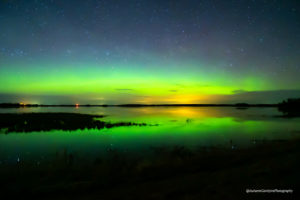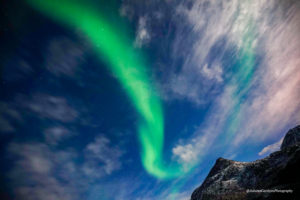
To a lot of us, seeing the Northern Lights – or aurora borealis – is a dream. These lights are one of the great natural phenomenon of the world. But what are they and how can we catch them?
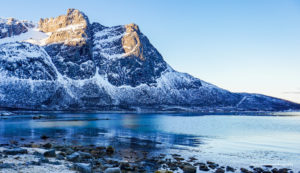
The Northern Lights actually do come from the north, so traveling that direction when seeking them out is best. The top countries for viewing the Northern Lights are: Norway, Sweden, Canada, Finland, and Greenland, but it’s definitely possible in the United States as well! From August to March, sightings can occur under the right conditions. Off-chance sightings can happen, but most likely a good amount of effort, planning, and time will be necessary to see these lights. The bright flares that are visible are the result of electrically charged particles colliding as they leave the sun and enter the earth’s atmosphere. Colors range from pink to green, but often they appear gray or white.
A few factors to consider when starting your aurora borealis journey:
- The Northern Lights are typically not visible between April and August because of the amount of daylight.
- There is a tricky balance between winter conditions and precipitation; the ideal viewing weather is cold and clear with no snow or rain.
- The darker the better. This makes the winter season the ideal time to try because of the minimal daylight in the North.
- A full and bright moon won’t negatively affect your chances of seeing the Northern lights, but light pollution will. The more remote you can be, the more likely you are to catch them.
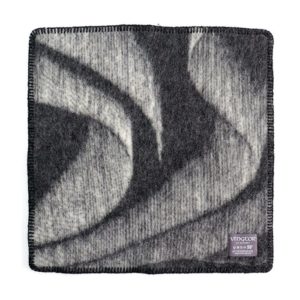
Northern Lights chasing is a popular reason to travel, especially to Scandinavia. But if you live in Minnesota, you don’t have to travel too far in order to see them! According to Park Rapids Enterprise, “The following are considered to be some of the best places in northern Minnesota for viewing the northern lights:
-
Voyageurs National Park: A certified International Dark Sky Park, the national park, located near the Canadian border, offers unpolluted skies and a myriad of waterways perfect for aurora viewing.
-
Boundary Waters Canoe Area Wilderness: Accessible mainly by canoe, this spot is one of only 14 certified International Dark Sky Sanctuaries in the world, making it a northern lights gazing rarity.
-
The Gunflint Trail in the Superior National Forest: A drive along the Gunflint Trail provides visitors with their choice of lakes to survey the lights over, and some have public boat launches for better viewing.
-
Artistʼs Point, Grand Marais: These jagged rock formations of Lake Superior are stunning at night when paired with a glimpse of the lights. Visitors are able to drive to the nearby beach and park by the Coast Guard Station for easy viewing.
-
White Sky Rock, Lutsen: Located on Caribou Lake, this location gives spectators a full 360-degree view for light gazing at an altitude of 1,400 feet. However, it does require a bit of a hike to get there.”
Autumn Carolynn Photography is one of our vendors at Ingebretsen’s. Autumn is a travel and northern lights photographer here in the twin cities! She has shared a few tips below on how to find Northern lights locally, and as you can see from the photographs in this post – she’s been successful.
Autumn’s Tips:
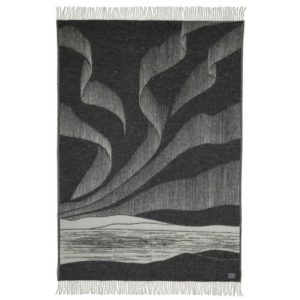
#1: Find Dark Sky! Here is my Dark Sky Map that I like to use to find the best places in the Midwest to find dark skies: https://www.darkskymap.com/nightSkyBrightness
#2: Research the right conditions for an Aurora Borealis to appear by viewing apps such as:
AuroraAlerts: https://aurora-alerts.com
AuroraNow: https://apps.apple.com/us/app/aurora-now-northern-lights/id1037695306
SpaceWeatherLive: https://www.spaceweatherlive.com
AuroraPro: https://apps.apple.com/us/app/my-aurora-forecast-pro/id1075462280
Geophysical Institute: https://www.gi.alaska.edu/monitors/aurora-forecast
SpaceWeather Prediction Center: https://www.swpc.noaa.gov/products/aurora-30-minute-forecast
#3: Understand the right viewing conditions by learning KP Index, Bz, Bt, and Wind Speed. Here’s a tip I like to use:
KP Index is best found by where you will be in time of viewing and according to this chart:
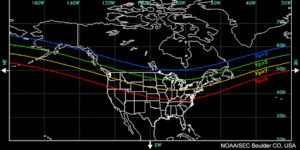
For Example: If you live in the twin cities area, it will be best to start to prepare your things for an Aurora Borealis road trip up north if the predicted forecast is a KP Index of 5 or above.
Generally speaking, it is always best to get ready when you start noticing a Negative Bz, Positive Bt, Increased Hemispheric Power, and Increased Solar Wind Speed. Example: KP 5, -10 Bz, 400+ Wind Speed..etc.
#4: Bring your camera, tripod, remote shutter, extra (charged) batteries, and your memory card. Put your camera in Manual Setting with your f-stop at the lowest setting it can go (1,2). Select manual focus and then set the focus to infinity. I generally like to start off with a lower ISO as the higher you go, the more grainy your photographs will be. A good range would be to start around 1,000 ISO and start off with a 15 sec exposure.
#5: Bundle up! Bring mugs of hot cocoa or coffee, grab lawn chairs, blankets, and remember to try not to look at your phone or other sources of light for at least 20 minutes so your eyes become accustomed to the dark. And have fun!
Autumn is a freelance travel writer and photographer based in Minneapolis, Minnesota. Previously a flight attendant, she’s traveled to 30 countries, 48 states, and 5 continents. While studying abroad in England, Autumn traveled with only a backpack, her Nikon, and wide eyes. Time spent as a flight attendant, travel agent, and travel design manager allowed Autumn to see the world and find her one true love, travel photography. You can find more at autumncarolynn.
